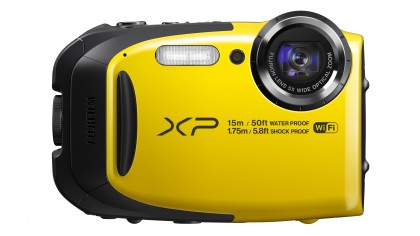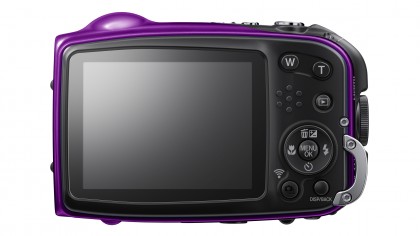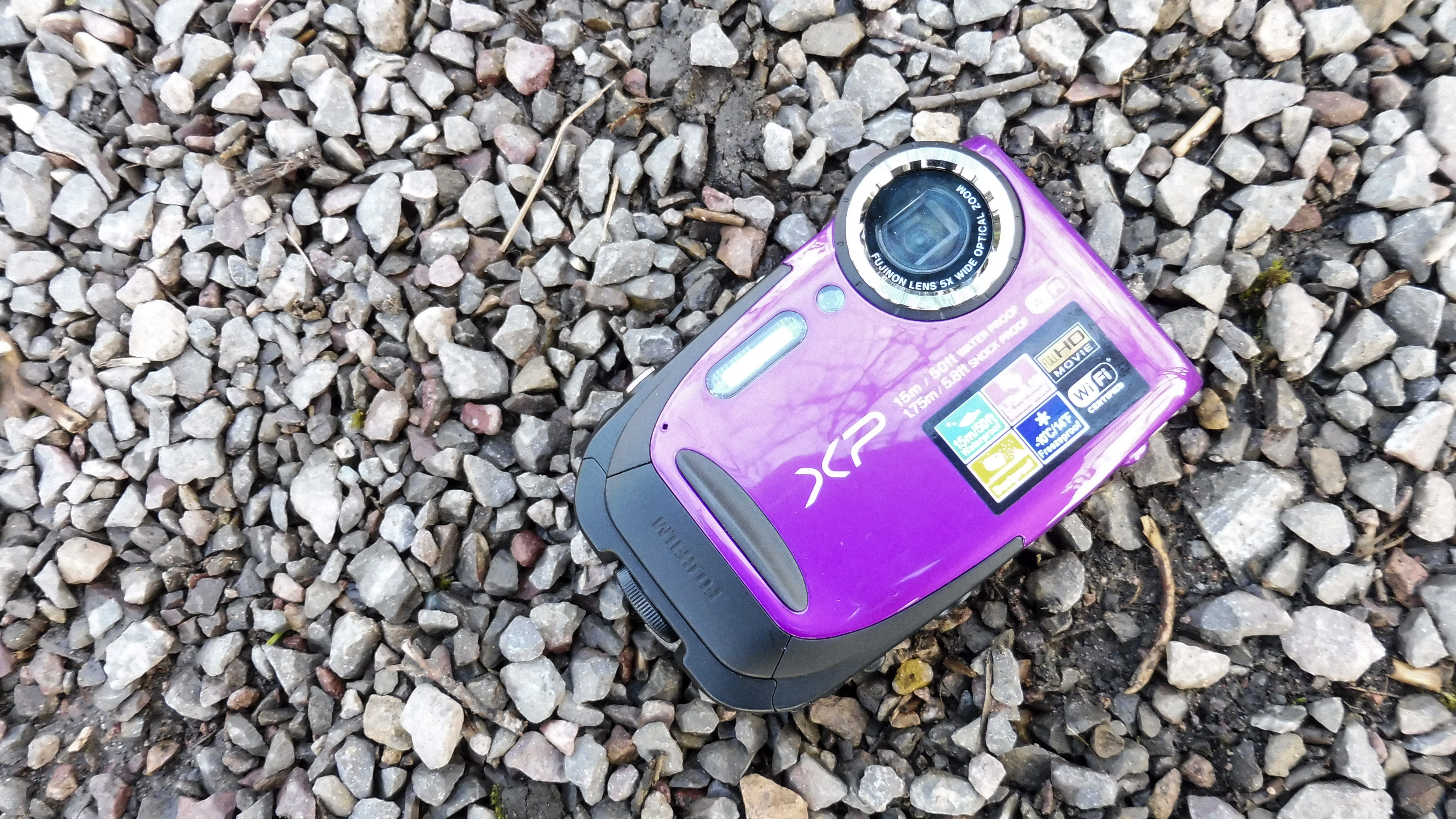TechRadar Verdict
A simple camera designed not to be taken too seriously and used on family and adventure holidays. Ideal if you like to shoot underwater, at the beach and on the slopes.
Pros
- +
Rugged credentials
- +
Built in Wi-Fi
- +
Creative functions
Cons
- -
Not great in low light
- -
Only a 5x optical zoom
- -
Small LCD screen
Why you can trust TechRadar
Rugged cameras make good holiday and family cameras because they can handle anything you're likely to throw at them.
The Fuji XP80 is waterproof (down to 15 metres), shockproof from a height of 1.75 metres, freeze proof down to -10 degrees celsius as well as dust and sand-proof. Often, these kind of credentials come at the expense of decent image quality, but the XP80 is equipped with a 16.4 million pixel 1/2.3-inch BSI CMOS sensor, which in theory should offer good quality pictures.

There's also a 5x optical zoom, inbuilt Wi-Fi, a 2.7-inch LCD screen with anti-reflective coating and full HD video recording. A range of digital filters are available, including a brand new "Sketch" option, and there's also an "Action Camera" mode, which means you can use it in the same way that you might use something like a Go Pro while taking part in action sports such as skiing.
Quite a few rugged cameras are available on the market right now, but sitting towards the more "family" end of the spectrum, the XP80 perhaps competes most closely with the Olympus Stylus Tough TG-850.
Build Quality and Handling
Fuji has gone for a curved look for the XP80, as it has with previous XP cameras. The lens itself is completely encased in a rounded shell which protrudes out from the top of the camera, while the corners of the camera are smoothed off.
There's a small rubber grip on the front of the camera which helps you to get better purchase on it, but if you're wearing thick gloves, you may struggle to feel it. On top of the camera is the shutter release button, which is textured and quite large – this helps you to better find it when using the camera underwater or with cold hands. Its large size also makes it fairly easy to use with gloves.

The other buttons on the back of the camera include a 'telephoto' and 'wide' button for zooming the lens in and out. Once again, these are quite large and are well spaced, making them easy to use with gloves or underwater. You'll also find a standard four way navigational pad, but these buttons are smaller and slightly more fiddly, though it probably won't matter too much if you're concentrating on taking pictures rather than changing lots of settings.
Sign up for breaking news, reviews, opinion, top tech deals, and more.
Having said that, there's not a huge amount you can actually change. The exposure modes available are Scene Recognition Auto, standard Auto, Program and a range of scene and filter modes. In Program, you can change sensitivity (ISO) and white balance, but not much else.
On the side of the camera you'll find a door covering the memory card and battery. This door can only be opened by pushing in a button and twisting a lock – something which is pretty difficult to do by accident, giving you confidence when using the camera underwater.
Connecting the camera to your smart device is fairly straightforward. You can control the camera remotely, or you can send photos over to your device for quick sharing on social networks and so on. There is also a dedicated button for accessing Wi-Fi when in playback mode, which speeds things up even further.

Amy has been writing about cameras, photography and associated tech since 2009. Amy was once part of the photography testing team for Future Publishing working across TechRadar, Digital Camera, PhotoPlus, N Photo and Photography Week. For her photography, she has won awards and has been exhibited. She often partakes in unusual projects - including one intense year where she used a different camera every single day. Amy is currently the Features Editor at Amateur Photographer magazine, and in her increasingly little spare time works across a number of high-profile publications including Wired, Stuff, Digital Camera World, Expert Reviews, and just a little off-tangent, PetsRadar.
